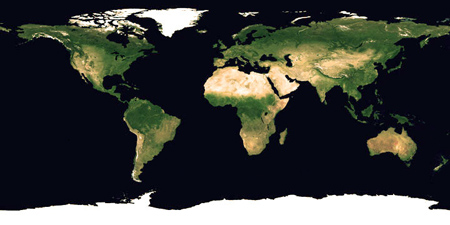
International Journal of Advanced Sport Sciences Research
ASSR is an open access journal, aims at rapid publication of concise research papers of a broad interest in Physical education fields. Subject areas include all the current fields of interest represented by the Committees of the Design Scientific Renaissance. ASSR welcomes papers and articles in sport and physical education, fields of ASSR includes but not limited to: sport for all; Exercise physiology; Moths of training and coaching;Sport’s performance and analysis

Journal of Advanced Computer Science and Technology Research
JACSTR is an open access journal, aims at rapid publication of concise research papers of a broad interest in computer science and information technology fields.

Journal of Advanced Laser and Optics Research
JALOR aims at rapid publication of concise research papers of a broad interest in laser and optics fields. Subject areas include all the current fields of interest represented by the Committees of the Design Scientific Renaissance. JALOR accepts papers and articles in fields, including but not limited to the following: Actuator; Detectors; Ferroelectric And Ferromagnetic Materials; Filters; Holography; Laser Accessories And Optics

Journal of Advanced Medical Research
Journal of Advanced Medical Research (JAMR) is an open access journal, provides rapid publication of various articles in the fields of Medical, Dentistry, Pharmacy, Comparative Veterinary and Medical sciences, and related disciplines. JAMR seeks to publish experimental and theoretical research results of outstanding significance in the form of original articles, reviews, case reports, short reports, or letters to the editor.

Journal of Advanced Science and Engineering Research
JASER is an open access journal, aims at rapid publication of concise research papers of a broad interest in science and engineering fields. Subject areas include all the current fields of interest represented by the Committees of the Design Scientific Renaissance.

Journal of Advanced Social Research
JASR is an open access journal, aims at rapid publication of concise research papers of a broad interest in social fields. JASR welcomes papers and articles in social fields, including but not limited to the following: Accounting; Applied Economics; Business Law; Business Management; Economics; Education Read More >
Journal of Purity, Utility Reaction and Environment
JMMR aims at rapid publication of concise research papers of a broad interest in marketing fields. JMMR welcomes papers and articles in marketing fields, including but not limited to the following: Consumer behavior; CRM; Customer Knowledge Management; Advertising economies; Consumer modeling; Marketing research; Interactive marke

Journal of Purity, Utility Reaction and Environment
The Journal of Purity, Utility Reaction & ENVIRONMENT focuses upon six aspects of chemical engineering: chemical reaction engineering, environment chemical engineering, and materials synthesis and processing, catalyst surface reaction, optimization and control.








How much does a Pool Table Cost for your Home?
by Lucie Mondragon (2024-11-06)
Email Reply
The next step is to convert the function’s body, so to convert a statement or expression to SSA it uses a recursive routine (with validation) switching over all the various different operators. After some validation & logging (including updating the progress line) xz --list carefully temporarily-opens & lstats the file wrapped in an abstraction & logging, before parsing & printing the indices. Printing (upon success) can be done in robot, basic, & advanced modes with or without counting totals. Pool is a classic, chill game you can play with family and friends. They are also well-suited for people who only play pool occasionally and only want to spend an average cost for a pool table. Average pool table cloth prices range from $130 to $335. If you want a lap pool, it costs an average of $50,000 to $100,000 for in-ground models, but you can get an above-ground lap model for a much lower price. Most above-ground pools do not increase the value of your property, so may not impact your property taxes. The materials used, such as the wood for the frame and the slate for the playing surface, also impact the price.
These tables are made of slightly higher-quality materials and can cost between $1,200 to $2,100. A simple means by which CPUs allow for parallelism is "vectors", which can be done by disabling certain carry bits. To decompress a "dynamic" block (next 3 bits are 2) it reads in table lengths & validates them, reads in each length in table zeroing out others, reformats that into a newly-malloc’d lookuptable (using plenty of increments, bittwiddling, & possibly mallocing subtables) freeing them upon failure, does same for a couple other tables, & decompresses normally. To decompress LZH-compressed input zeroing out several fields & filling the readbuffer. Then clears away any existing index tree & initializes a new one erroring out upon allocation error, enqueues a stream header, & writes it via a newly-initialized "block encoder". During the curing time, the concrete will have to be sprayed with water to prevent it from drying out suddenly and developing cracks.
More than I want to write in JavaScript, and more than I want to write in Swift and then have to promptly rewrite if I ever manage to build an Android app. Then XZ allocates the coder & sets its properties if previously NULL, runs a callback (which here allocates some additional properties if previously NULL, determines/computes parameters based on whether its in fast or normal mode, sets some other flags based on validation, sets various options, & resets its state), validates encoding options before computing & saving parameters from them whilst freeing any existing buffers, selects which find & skip methods to use (hc3/4 or bt2/3/4), computes & rounds hash size/mask then count, frees old hashmap, computes number of iterations for match finder, & allocates new buffer & hashmap prepopulating an existing dictionary into it if given. These compression dictionary lookups/stores are implemented as a choice of straightforward hashmaps, binary trees, or combination thereof. To decompress a "stored" block (next 3 bits are 0) it reads the block’s length & validates the complement value, & reads each byte into a "slide" to be flushed a bufferful at a time.
Initializes a longestmatch table & prefills the buffer whilst computing CRC via lookuptable, determines whether to take fastpath below, & repeatedlies updates that lookuptable, seeks back through the linkedlist to find the best match for data to compress, skipping distant length-3 matches, & before refilling buffer as-needed either: - outputs previous match by validates match, updates Huffman frequencies whilst buffering for later compression, & inserts each substring into lookuptable. Listing a Tarfile is straightforward: use the common logic for reading those files & after computing the "block ordinal" from the scanner outputs the file header & possibly directory contents (determined by the verbose & incremental commandline flags) before skipping the file itself. UNPADDED & UNCOMPRESSED outputs a variable-lengthed uncompressed size before incrementing the state. NEXT iterates a single iteration over the index preceding to PADDING or upon error immediately to UNPADDED. To read a Tarfile tar initializes a base64 decode table, gathers filenames into a single linkedlist, carefully opens the archive for writing very similarly to how it does for reading, & before closing that tarfile (again, as per before) & and outputting any missing names it repeatedly until names are found reads a new fileheader after destroying previous & decodes then validates it if successful, performs some normalization, runs the callback for the subcommand, or skips the entry.
If you cherished this short article and you would like to acquire additional data concerning How Much Does a Pool Table Cost kindly stop by our own web site.